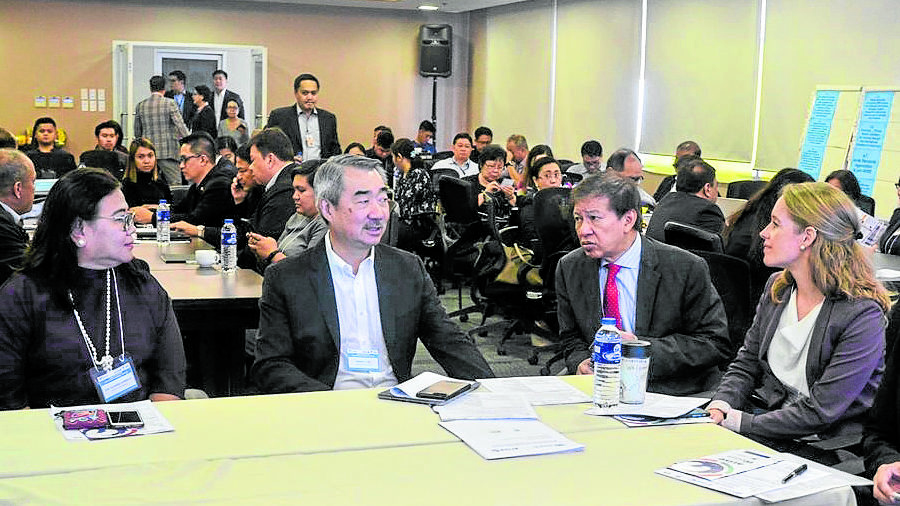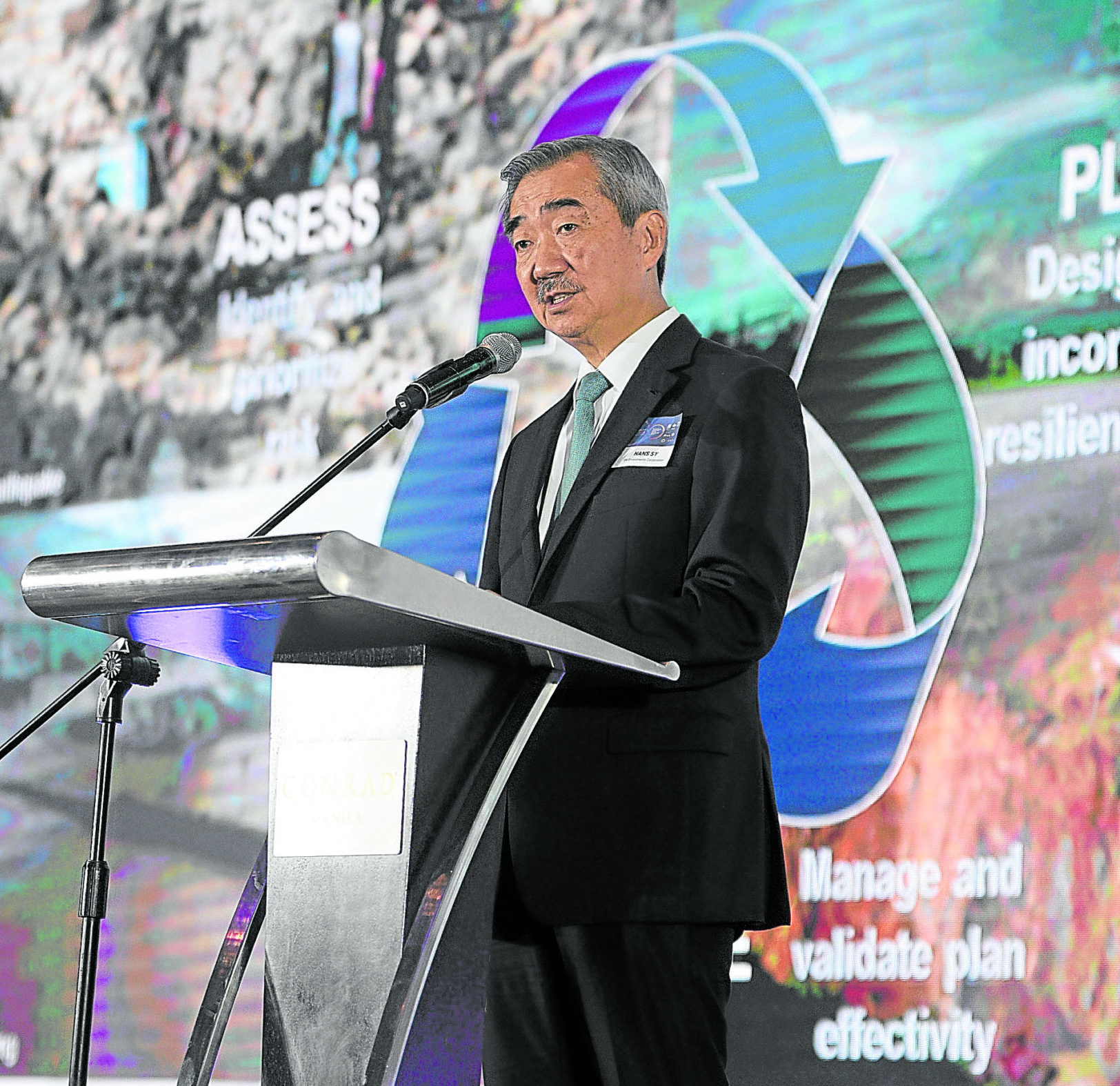
Sy actively participates in meetings of the UN Private Sector Alliance for Disaster Resilient Societies
Out of the long list of lessons that Hans T. Sy learned from his late father, SM Group founder Henry Sy Sr., one stands out and has guided his life’s journey: Walk the talk.
For the 64-year-old chair of China Banking Corp. and the executive committee of SM Prime Holding Inc., that means not just mouthing platitudes about the need to take care of the environment, but actually investing his time, resources and expertise to help the group and the country better respond to the call to protect and nurture Mother Earth.
Sy does this through his involvement with the UN International Strategy for Disaster Reduction (UNISDR). He started his work there as a member—the only Filipino—of the Private Sector Advisory Group. Today, he has taken on added responsibility as an international board member of UNISDR Arise, or Private Sector Alliance for Disaster Resilient Societies, a platform for businesses to share knowledge and strategies toward investing, particularly in disaster resilience and management.
His work there takes on added significance this June, which was declared Philippine Environment Month in 1988.
“Self preservation is a natural instinct so why shouldn’t it be as inherent in our nature to want to preserve, restore and improve on what was given to us? After all, this planet is all we have. There should be no recourse but to take care of it,” Sy told the Inquirer.
Sy emphasized the urgency of doing just that as the Philippines is particularly vulnerable to the devastating effects of climate change, ranking fourth among countries most affected by extreme weather events and third highest in terms of disaster risk.
“Given the archipelagic nature of our country, at least 60 percent of our total land area is exposed to multiple hazards, and as much as 74 percent of our total population—now a little over 100 million—is susceptible to these adverse impacts,” he said.
Government alone will not be able to mitigate these risks by, for example, building more resilient cities. The private sector has to do its share in building critical infrastructure to help communities thrive above the effects of climate change.
“This became very apparent to me when I saw one of our malls in Pangasinan go under the flood along with the whole town during Typhoon ‘Pepeng.’ I realized that resilience is important to our stakeholders—our employees, tenants, customers, suppliers and communities surrounding our malls. I was determined to help our stakeholders bounce back better and stronger,” Sy said.
This explains the SM Group’s adoption of a holistic approach to disaster resilience, by integrating disaster risk reduction into its core business models and processes.
First, Sy said the SM Group integrated disaster risk reduction in the malls, allotting 10 percent of capital expenditure to disaster resilient features in the design and construction. SM employs disaster risk management methods such as risk assessments, early warning systems, business continuity management systems and continuous efforts for capacity building.
“With each event, we have had to assess the impact of climate change against what we prepared for such as during Typhoon ‘Ondoy’ and other typhoons, where the higher design elevation of the Mall of Asia complex proved able to withstand the large waves and storm surges. For our future developments, we are using peak disaster events based on data reaching back 100 years or more and providing for buffers even beyond that,” Sy said.
Also in the malls and other property developments such as offices are features such as energy efficiency, waste management and even traffic control measures to contribute to environmental sustainability and operational safety. These, in turn, contribute to the collective sustainability of the communities where the SM Group operates.
Its efforts to promote disaster resiliency extends also to the tenants and locators, specifically through the SM Resilience Center in SM Clark, Pampanga, a centralized data and digital information hub and repository to help clients preserve data vital to their operations.
“We currently provide free data storage of 5 gigabytes for around 1,600 SMEs (small and medium enterprises) from all around the country that serves as a vital backup during disaster recovery and business continuity. As a result, SMEs can access digitized copies of their contracts, permits, policies and other important documents to help them bounce back better after a business disruption,” Sy said.
Finally, Sy said an important approach toward urban resiliency was multisectoral cooperation and collaboration with such institutions as the National Resilience Council, Apec Emergency Preparedness Capacity Building Center, United Nations Office for Disaster Risk Reduction and Global Education and Training Institute, and the Department of Trade and Industry.
“Achieving true resilience is a combined effort of the government, the private sector and civil society. We in the private sector should do our part in adopting responsible and sustainable business practices to help fortify our urban centers—integrating disaster risk reduction into business models and processes, and making investments that not only translate to financial return but shared value that safeguards the lives and interests of all our stakeholders,” he said.
Promoting disaster risk reduction and resilience is a long journey, more of a marathon than a sprint, but a task that Sy is happy to take on, believing it to be a worthwhile legacy to leave behind to his own children.
“By walking the talk as how my father has always done so, I am quite hopeful that one way or another, it should rub off on the kids,” Sy said.


